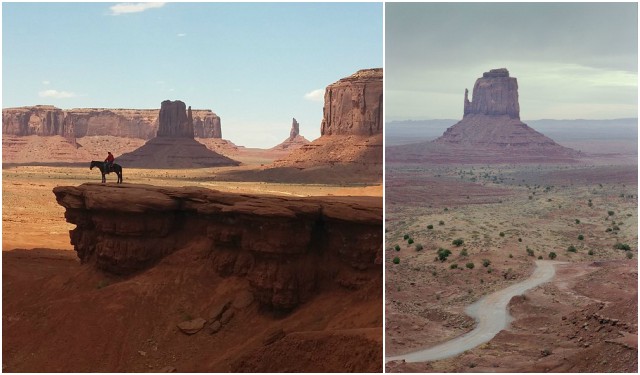Everyone who is a film buff and loves movies, especially if it’s a western fan, knows that John Ford is responsible for creating the definitive look of the genre. The lone gunslinger, the wide open spaces, the deadly frontier, all of these now very recognizable motifs Ford succeeded elevating to an artistic level.
His influence can be seen in all of the western films that came after him, especially when it comes to shooting landscapes. Nobody could shoot vistas the way John Ford could. And his ability to make them look mythical, dangerous and romantic at the same time, is unparalleled to this day.
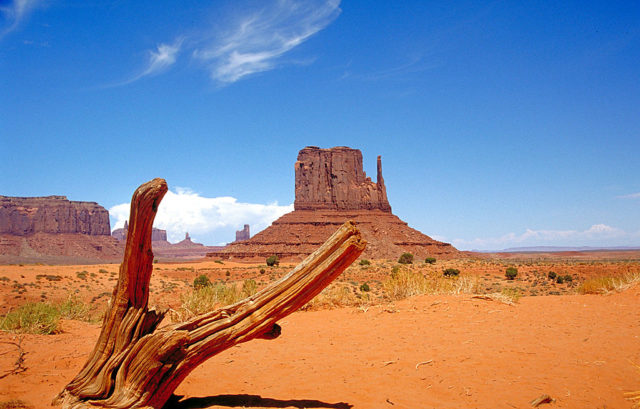
Ford was also a chronicler of the American past and great storyteller, telling tales for and about the common man and making them feel like legends of a faraway, bygone era, like something out of a folk song. Also, Ford always preferred to shoot on location instead of a soundstage, so he could get the most realistic look possible.
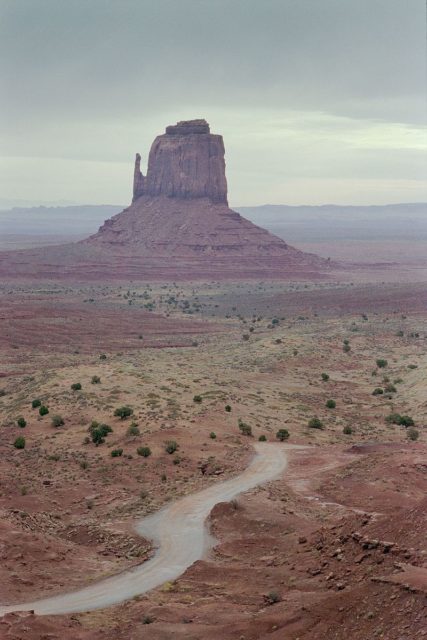
Which is exactly where we come to the subject of this article. Because, while Ford to a large extent created the iconic image of the lonely cowboy standing in a wide open space, he didn’t actually invent it. The shot was already there, he just needed to find the right place to do it. And the right place was at the eponymous Monument Valley, the colossal 92,000 acres of sandstone that helped forge the myth of the American West.
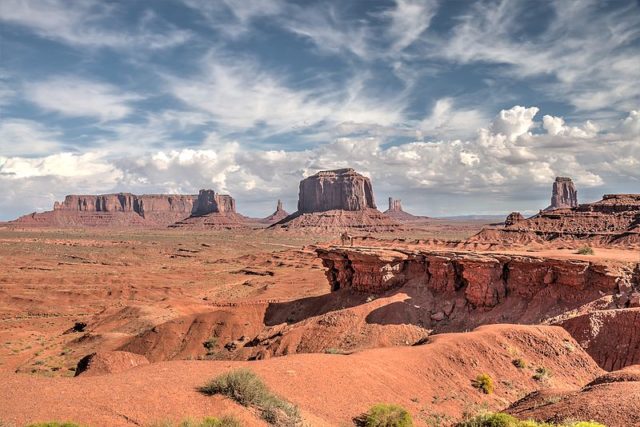
You may disagree, but just looking at a single picture of the valley can remind you of the old frontier and the past, portrayed, romanticized, criticized, even glorified in thousands of pieces of literature and movies. And much of that is because of John Ford, whose images of the individual, stranded, diminished by the vastness of the scenery and facing its brutality, are embedded into our collective consciousness. As the film historian Scott Eyman said, “There are certain places in the world that seem like special effects, they don’t seem real. They’re too perfect. And the first time you come here, you see it through John Ford’s eyes.”.
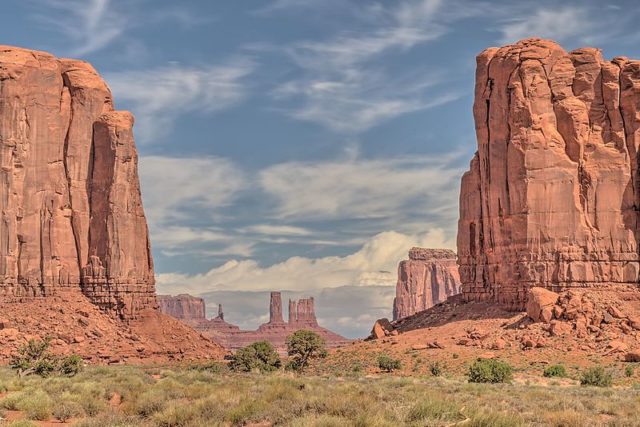
Ford shot ten of his most famous films in Monument Valley, starting with Stagecoach, which also introduced John Wayne’s trademark persona to the world. The Searchers, which is mostly set in the valley, was named the greatest western of all time by the American Film Institute in 2008.
Located near the Four Corners, on the Arizona-Utah border, the Monument Valley territory belongs to the people of the great Navajo Nation. Ironically, American settlers never came through the valley, but because of Hollywood, the territory has become synonymous with the Old West, in Eyman’s words “a metaphor for the American conquest of space and the continent”.
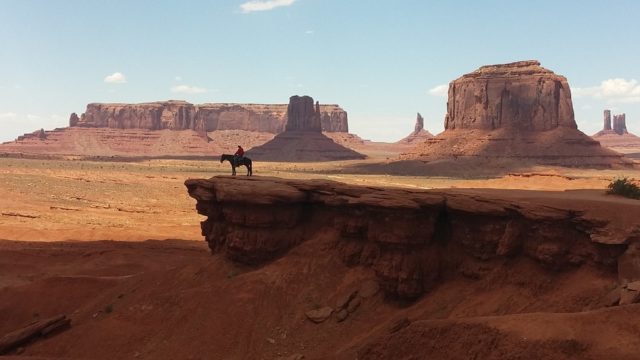
The area is entirely composed of sedimentary rock strata and siltstone soil that form the large stone monoliths. The soil is rich with iron oxide, which is what makes those striking red colors to pop up. The place almost seems like it is out of this world, as if you are walking onto the surface of Mars. Standing there and seeing all those magnificent rocks, the red desert sand, and the blue sky above makes for an experience like no other, it’s a personal spiritual conquest through the heart of America and getting to know the country’s roots.
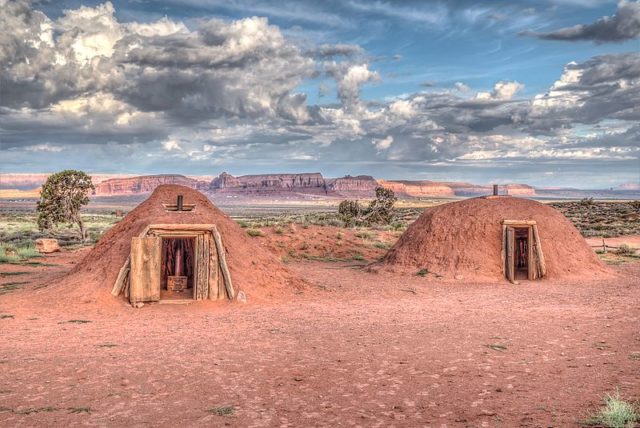
But above all else this, is the land of the natives, and visitors who come here gotta pay a fee if they want to go through the area. It is a 17 mile drive of what is designated as the Monument Valley Navajo Tribal Park where people have the chance to see the true wild region of the West. And see it as it is, first hand, not how is depicted in the movies.
